Maria Papadimitriou In the courtyard of memory 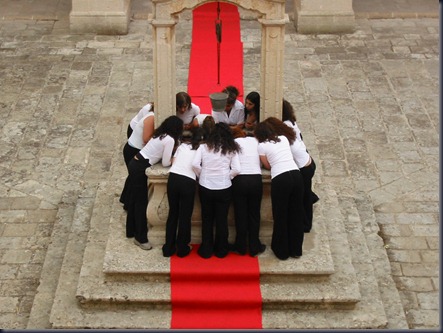 by Vassilika Sarilaki “Ladies and Gentlemen, allow me once again to begin with the trauma”. These were the opening words of one of Joseph Beuys’ last lectures before his death. Germany’s most important post-war artist tried, in a time of modernism, to talk in every way about the social and existential trauma and propose symbolic, allegorical ways to treat it. His initiatives in trade unionism and the agricultural movement, his environmental activities and his political dicta served as beacons for his successors. In the post-modern condition of globalisation, the artists who came out of their studios and into the hard arena of a new, constantly changing situation found themselves self-consciously exposed to reality. Their interaction with the new, vast readymade of reality and their merciless bombardment with images from the media relegated them to the uncomfortable role of passive witnesses, as typified by the sociological-reportage art of the ’80s in America and Britain, with photographic renderings of the margin or images of personal “trauma”, disguises and cynical snapshots like those by Cindy Sherman, Kiki Smith, etc. It seems that few contemporary artists got over their new post-traumatic stress. The key in this case was to act exactly within the problematic area of reality. Maria Papadimitriou is one of those artists. After her early quests in the area of form and aesthetics, through ‘descriptions’ of objects, records of personal actions on identity and explorations of the harsh feeling of comics, in 1989 she decided to express and emancipate her artistic gesture with actions in real, charged spaces of everyday life. 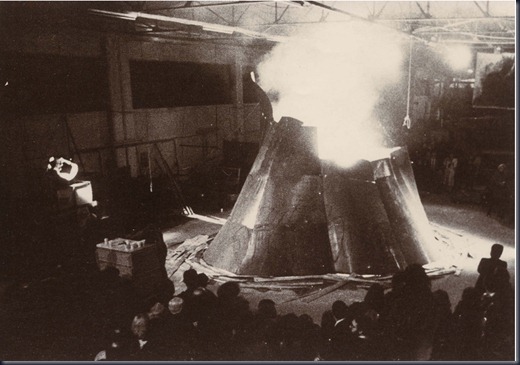
The turning point was marked by Volcano, a conceptual as well as symbolic action at a heat-collection plant in Sindos, near Thessaloniki. She created a huge artificial volcano which produced controlled explosions accompanied by evocative music. The heat given off by the happening and the off-beat music generated a tension of energy, an ecstasy among the audience. In 1992 she presented a new public happening, projecting a huge laser design in front of the White Tower in Thessaloniki. The projection showed the Leaning Tower of Pisa in an upright position, and was meant to correlate the two historical monuments and make viewers think through their physical involvement with the work. 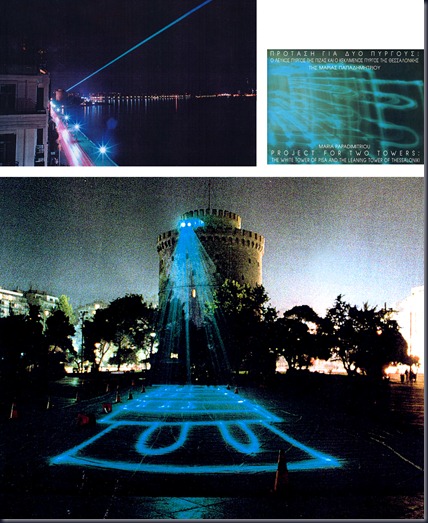
After 1992 Maria Papadimitriou presented various actions aimed at involving and activating viewers, until 1998, when she embarked on her major project, Τ.Α.Μ.Α (Temporary Autonomous Museum for All). This was an entirely different approach to reality. The artist decided to record the peculiar life and the forsaken, destitute landscape of a Vlach-Rumanian Rom community at Avliza, a wasteland on the outskirts of Athens. There she became close with the locals, some of whom are in imminent danger of becoming homeless due to the unchecked waves of immigrants who swarm the area, and decided to set up a task force of scientists, artists and volunteers to improve the area. Outdoor and indoor facilities for housing, recreation and hospitality were designed in tune with the locals’ nomadic culture, and a new type of political and cultural interventions was proposed. After all, the concept of a temporary, autonomous museum inherently reflected the acceptance of gypsy life as the constantly changing readymade of a singular reality. It is an incorporeal, open museum which keeps changing thanks to the nomadic resourcefulness of the people of Avliza, who happen to be artistically creative, too. 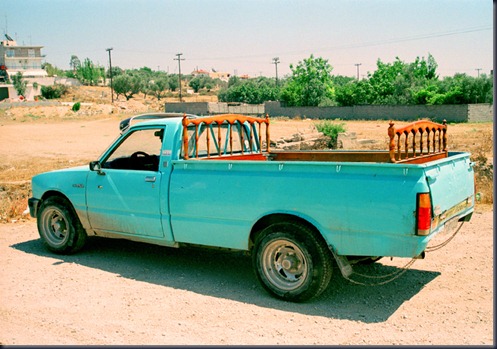
The “Social Facilities for Itinerant Populations” instituted by Maria Papadimitriou constitute an ongoing appeal for the artists’ contribution to the suffocating life in areas which need vital help; they also broaden the artist’s experience through contact with these ‘pressing’ realities. Maria Papadimitriou worked on similar lines in a recent project in Sternatia, the capital of Magna Grecia in southern Italy. Magna Grecia is a region of Greek-speaking people, remnant of the Great Greece of old. The ancient Greek, idiomatic dialect of the people of this equally poor region moved the artist, who decided to create a work/testimony on the relationship of these Greeks who are forsaken by their ancestral Greece. The installation, hosted in the courtyard of the Town Hall of Sternatia from May to September 2003, functioned symbolically, dramatising the close intellectual affinity between the Greek-speaking inhabitants and the Home Country as well as their feeling of estrangement from it. It was a tribute to memory. 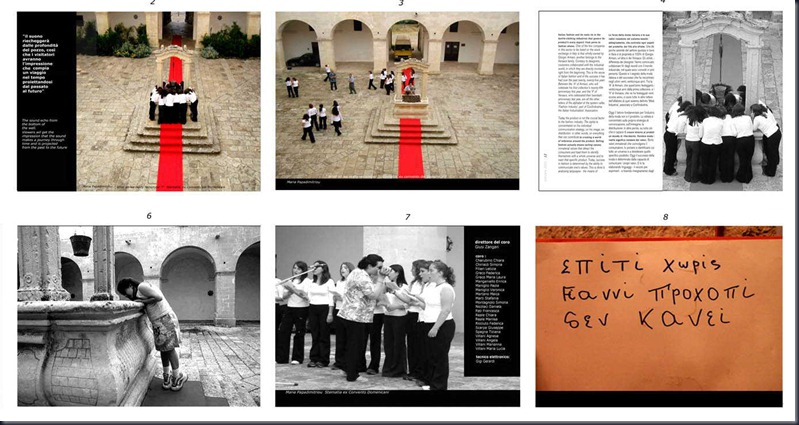
The artist made use of an ancient well at the centre of the courtyard of the old Dominican monastery which is now the Town Hall. The well was the protagonist; a tape recorder inside it played a nostalgic Greek song recorded by the local choir of young people. The way to the well and beyond it was laid with a red carpet which symbolically divided the yard in two sections. A sensor placed at the head of the carpet increased the volume of the song as a viewer approached the well, but when he reached it and looked inside to see where the sound was coming from, the song faded away. The happening was about the estrangement from their roots of these people who may live very close to Greece but are separated from her by a merciless gap of time. “The viewers who took part in the happening did not play a role to reveal some truth. On the contrary, their truth became a role, and this seemed to move them” the artist says. The participants in fact witnessed a new reality which was no other than their own. The cycle of the course was completed and another truth emerged: relationships are reciprocal. A Greek artist came to remind them what they wished to express: Homecoming as the anniversary of a feast, but also as pain... |